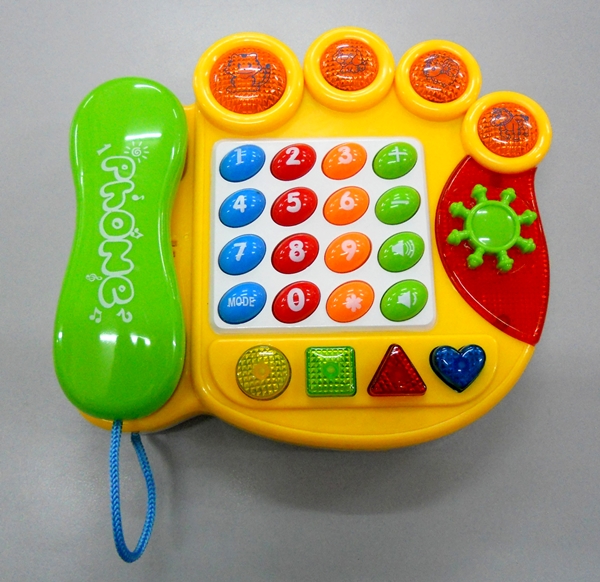Telephony and Music: the Perils of Modernity October 23, 2014
Author: Beach Combing | in : Modern , trackback
In 1876 the telephone was born after a half dozen inventors had scrambled for the right formula for years: who could forget poor old Philip Reiss with his beer barrel, sausage skin, kinitting needle and two cups of mercury? The telephone was, in fact, one of those technologies that took off remarkably quickly and was quickly adapted to different tastes. This was particularly true of the use of music and the telephone. It was understood, almost from the beginning, that music could be effectively broadcast over the telephone to listening audiences in a primitive version of the wireless. For example, at one telephone talk (the Victorians loved evening conversazione and what better subject than the telephony) a speaker had, in 1879, a colloborator go up to the roof and sing ‘God Save the Queen’ (of course), ‘The Minstrel Boy’ and ‘Men of Harlech’ to his audience. The reporter noted diplomtically that ‘[i]t would not be fair to say that this part of the lecturer’s illustrations was highly successful.’ L.J. Crossley an inventor from Halifax adapted a specially made microphone to the telephone and, in 1879, had an invalid listen to Dr. Mellor’s chapel service some three miles away. At 47 Whitcomb Street a telephone exchange set up a special room where customers could go and ‘listen at their ease’ to ‘some half a dozen of the performances at the London theatres and music-halls, and sample each without going to the trouble and expense of paying separate visits’. The Whitcombe Street company were, in the 1890s, innovative and were soon talking about six pence fees for listening to a sermon at St Paul’s, a debate in the House of Commons or an Opera in Paris. Beach’s favourite, though, were the ten musicians performing, in 1892, in four different towns (Dudley, Wolverhampton, Stafford and Hanley) In other words the telephone not only allowed you to listen to distant events you could also practice with your friends… The performers were given light weight receivers that were attached to their heads by rubber bands. And ‘the results were suprisingly good.’ To a late Victorian audience these kinds of shenanigans must have evoked a glorious future of telephony halls and universal pensions: instead, their children were to get machine guns and trench warfare where telephone wires would, in the best case scenario, tell young men to go and jump into bales of barbed wire. Ah progress! Makes you wonder where iphones and mpegs will lead us. Other example of telephony magic: drbeachcombing AT yahoo DOT com
Bruce T on Telephony, 19 Jan 2017: Beach, I’m going to try to keep this one simple as I’m a windbag and this something I know a bit about. All radio broadcasting and television audio is technically radio telephony. It’s simply a signal that sent by some form of transmitter to a receiver, it acts just like telephone, the vibrations of signal are modulated by the transmitter, or the mouthpiece of your Mom’s old landline phone, and demodulated by your receiver, the earpiece. It’s basic stuff. When I first started knocking around in radio, we got all our syndicated programs, sports, and reporting over dedicated phone lines to be broadcast on air. No one could afford the rates to use satellites except for the big boys and TV preachers. Now it’s bounced off the “bird” by a satellite uplink and received at your radio station, tv station, local internet servers, cable company, cell company, you name it via a downlink frequency. The mode may be digital but it’s transmitting audio information via radio telephony in another form. Now, who owns the satellites and phone lines used in this process. Mainly groups of large telcomm providers, i.e., telephone companies. Podcasts? Telephony. The internet? Transmitted via telephony, either via wire or wireless, it’s all telephony of some type.( although computer engineers are loathe to admit it.) Satellite radio? Telephony. I could go on but you get the picture. Again telephony via wire or through the air is just a signal that contains information transmitted either via a wire or through the air that is received and demodulated at the other end. Cellphones and MP3 players? Reporters and programmers have been using cellphones to send in reports for years. It’s the same as calling in via a landline phone, the board op and station engineer handle the station/transmitter end. Talent doesn’t have to work from radio station studios anymore unless they want to or the station manager/owner insists on it. My studio is in my house. You call up the station, the board op patches you in and away you go. I basically use MP3’s to store shows on as backup these days, at one time I sent MP3 files in containing shows, but not so much anymore. I still use them for air checks when looking for voice work. What’s really revolutionized things is on the production end with quality programming and audio production software. Do the show earlier in the day, if you don’t plan on taking calls, on your handy-dandy studio in a box, your computer, via automation software and send it to the station. They add their commercials and ids, and it’s ready to roll. What used to take hours now literally takes minutes. Podcasts have always been done from home, out the cable, to your server, to satellite and the cloud and there it is for your listeners anytime they want it. It’s still sent up and retrieved via uplink and downlink transmitters and receivers sending information to be demodulated for consumption at the users end. Telephony is alive, well, and growing my friend, and that ain’t no phony baloney.


